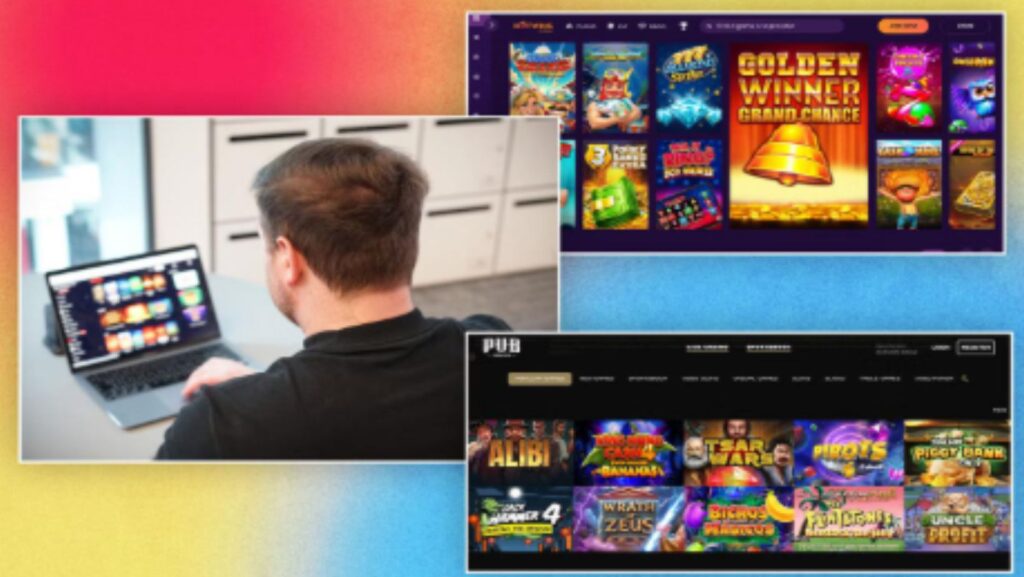When players think about online casinos, images of roulette wheels, poker tables, and slot reels typically come to mind. Yet over the past decade, another set of titles has quietly stepped into the spotlight: contemporary games that once belonged exclusively to the world of video entertainment. This shift has not only changed the variety of what’s offered online but has also reshaped how people think about digital play itself.
By merging the strategies and design elements of modern gaming with the structure of traditional betting platforms, a new kind of hybrid experience has been created. For millions worldwide, it feels like two industries once worlds apart are finally meeting in the middle.
Table of Contents
ToggleWhy Contemporary Games Matter in Casino Spaces
The inclusion of well-known video game styles—such as battle royales, puzzle quests, and multiplayer challenges—has given online casinos a fresh face. Players now expect more than spinning reels or static cards; they want interactivity that reflects the games they already know and love.
A report from Statista indicates that in 2024, over 3.4 billion people worldwide engaged with video games in some form. That vast audience has created a cultural backdrop where casino operators realized there was a chance to adapt similar mechanics into their own platforms. Instead of ignoring the trend, they began weaving in elements like progression systems, achievements, and character-driven storylines.
For casino operators, this adaptation goes beyond novelty. These integrations allow them to tap into a generation raised on consoles and mobile gaming, making the casino environment more familiar to new audiences. For long-time casino players, it adds an unexpected twist that keeps things engaging.
This transformation also highlights a generational shift. While older players may have been content with traditional table games, younger audiences often look for faster-paced, visually rich experiences. The introduction of contemporary game formats offers exactly that, blending the thrill of gambling with the creativity of video gaming.
Why Players and Operators Embrace Hybrid Gaming
From a player’s perspective, the biggest draw is immersion. Modern gaming elements create environments that feel richer and more dynamic than static slot reels. The sense of progress, whether through achievements, leveling systems, or story-driven campaigns, keeps players engaged for longer periods.
Psychologists have long studied the reward systems in video games, and casinos have noticed similar benefits when applied responsibly. For example, achieving milestones or unlocking bonus content gives players a sense of accomplishment, even beyond monetary outcomes. That layered satisfaction is one reason why retention rates in platforms with hybrid features often outpace those without.
On the industry side, the introduction of contemporary game mechanics has given casinos an edge in a competitive market. Offering experiences that feel distinctive and memorable helps operators stand out, while also creating loyalty among players who appreciate more variety.
These changes are already visible in many European casinos that have redesigned their platforms to include more interactive and game-like elements. Websites dedicated to reviewing and comparing such platforms give a clear picture of the direction the market is heading. One example is onlinekaszinok.com, a site that highlights how different operators adapt to these trends and what players can expect when engaging with modern online casinos. By looking at the types of features covered there, it’s evident that hybrid gaming is no longer experimental—it’s steadily becoming a key part of the industry.
Challenges and Considerations
Of course, blending these two worlds isn’t without its complications. Developers must strike a balance between entertainment and responsibility, ensuring that the excitement of modern gaming does not overshadow the need for safe play. This requires thoughtful design choices that prevent systems like quests or achievements from becoming overwhelming or misleading.
According to the UK Gambling Commission, 27% of young adults (aged 18–24) reported engaging with gambling activities that featured video game-style elements, raising concerns about blurred boundaries.
Deloitte’s 2024 Gaming Outlook highlighted that 55% of mid-sized casino operators cited “technology costs” as the biggest barrier to adopting hybrid game features.
There’s also the issue of regulation. Traditional casino titles already face strict oversight, but when video game elements are added—especially those resembling loot boxes or randomized rewards—questions arise about fairness and compliance. Different jurisdictions interpret these hybrids differently, meaning developers must remain flexible and informed.
From a technical perspective, merging advanced video game mechanics into casino platforms demands significant resources. High-quality graphics, multiplayer infrastructures, and responsive controls all require investment. Not every operator can sustain such development, which is why the market often sees a divide between larger, more innovative platforms and smaller, more traditional ones.
Lastly, while younger audiences may embrace these integrations quickly, not all long-term casino players are enthusiastic. For some, the appeal of online gambling lies in its simplicity—slots, cards, and dice without added layers. Balancing both groups’ preferences is one of the industry’s biggest ongoing challenges.
How Integration Works in Practice
Modern online casinos are reinventing player engagement by embedding game-like mechanics that go far beyond classic slots or table games. Inspired by the same strategies that boost motivation and performance in high-performing workplaces, these platforms focus on creating structured challenges, real-time rewards, and social recognition systems that keep users actively involved. Insights on how similar techniques increase motivation in professional settings can be found in this detailed look at workplace engagement and gamification, which explores how well-designed challenges and feedback loops drive participation.
One of the most effective methods is the introduction of missions and quests. Instead of simply spinning a slot, players are guided through a series of goals—such as completing themed tasks, unlocking hidden achievements, or reaching tiered levels—to earn bonuses, collect badges, and climb leaderboards. This structured progression taps into the human desire for achievement, making gameplay feel purposeful and rewarding.
Another powerful integration is the rise of skill-based slots, which combine reflexes, strategy, and decision-making with the traditional element of luck. Bonus rounds may shift from basic button presses to interactive mini-games where a player’s performance directly influences the outcome. This creates a stronger sense of control and immersion, linking effort to reward and making every win feel more personal.
The growth of cross-genre hybrid games strengthens this approach even further. Many titles borrow familiar elements from popular video games—such as multiplayer shooter-style bonus stages or puzzle-driven features—to provide instant recognition and excitement. The familiarity of these mechanics lowers the entry barrier for new players while appealing to those who already enjoy mainstream gaming.
Beyond gameplay itself, casinos are also investing heavily in community-driven features. Leaderboards, live tournaments, and integrated chat systems transform solitary play into a vibrant, social experience. Players can compete against one another, form informal teams, and celebrate collective achievements, mirroring the sense of connection and collaboration that drives engagement in modern workplaces.
Finally, data-driven personalization has become central to these strategies. By tracking user behavior and preferences, platforms can adapt challenges, tailor promotions, and deliver custom rewards in real time. This ensures that every interaction feels meaningful, creating a dynamic environment where entertainment, competition, and recognition seamlessly merge.
Through these integrated mechanics—missions, skill-based play, familiar game elements, social interaction, and personalization—online casinos are evolving into immersive ecosystems that captivate players and keep them engaged over the long term.
Last Words
The merging of contemporary games and online casinos represents a broader shift in how entertainment is defined today. Rather than keeping two forms of play separate, developers are creating environments that merge familiarity with novelty, simplicity with depth.
For players, this means more options and a richer sense of choice. For the industry, it signals a future where casino platforms can remain relevant by reflecting the cultural pulse of gaming. As technology continues to evolve, the line between a casino and a video game world may grow thinner, but the excitement it brings shows no signs of slowing down.





